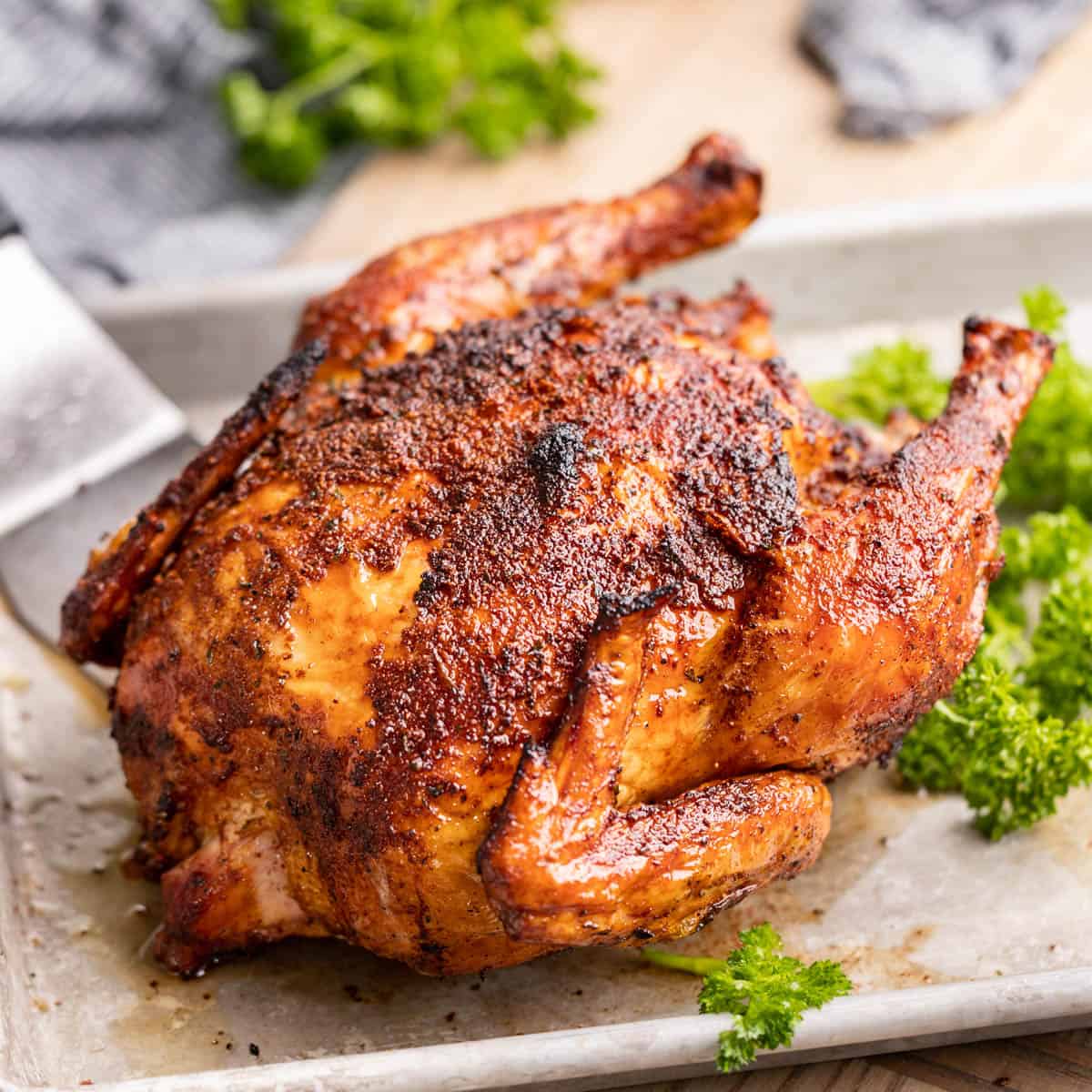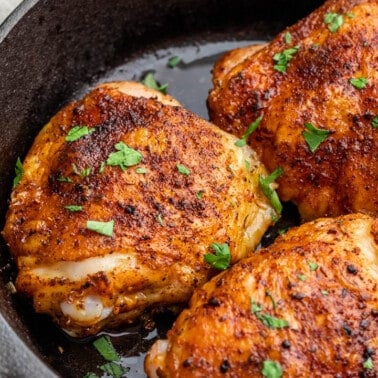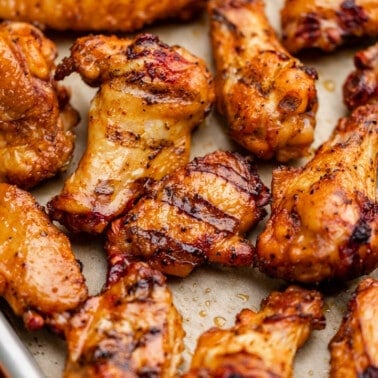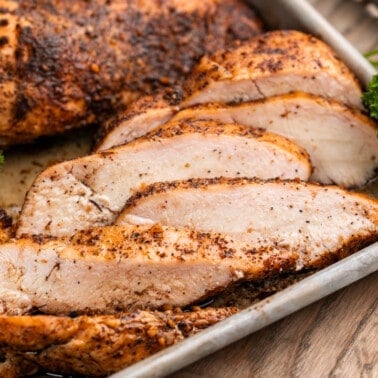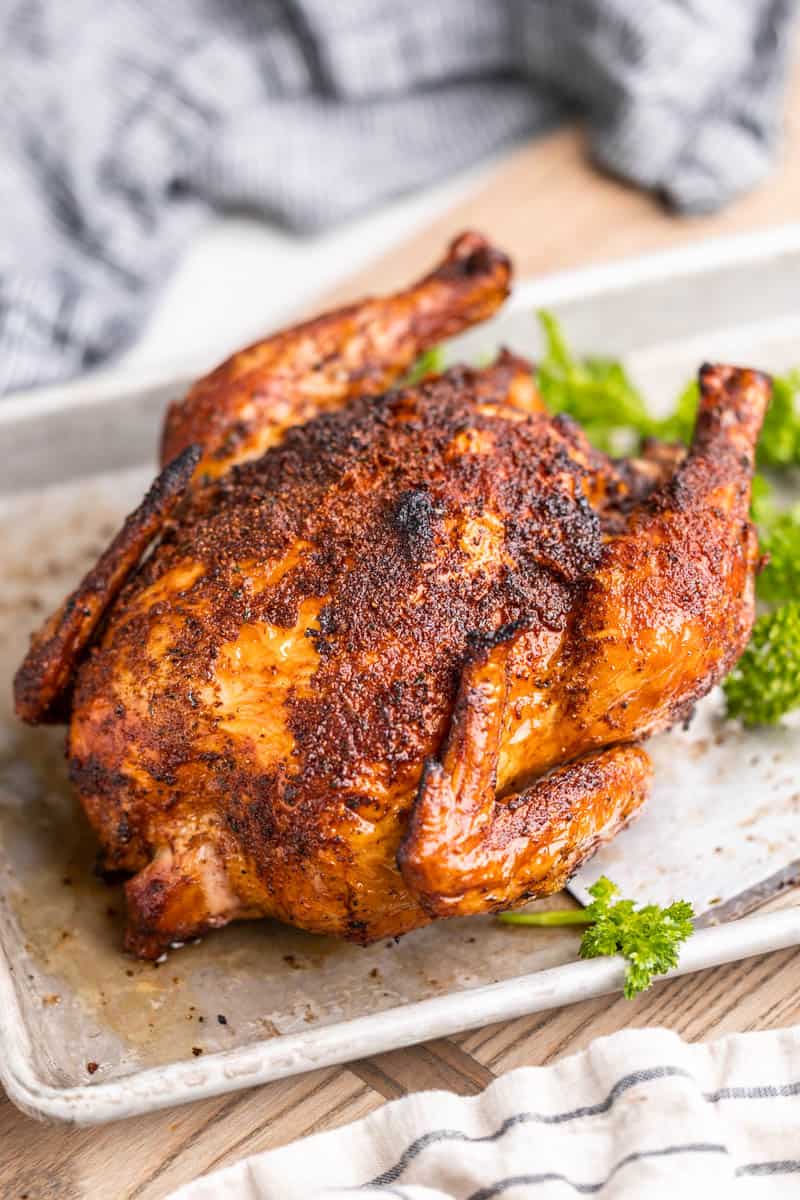Step up your barbecue game with this expertly crafted Smoked Chicken recipe, developed by none other than our own Pitmaster, and certified barbecue judge with years of experience, Caytlin McCleery. This recipe turns complex barbecue techniques into simple, foolproof steps that ensure perfect results every time. Whether you’re a seasoned grill master or a beginner weekend warrior, this guide makes smoking as easy as it can possibly get. You’ll always come out looking like a pro, and don’t worry, your secret is safe with us!
Why Our Recipe
- Written and developed by our resident Pitmaster and certified barbecue judge.
- Simple guided instructions that make this recipe as foolproof as it gets!
- Suggested pellet options to help you choose which flavor works best for your cook.
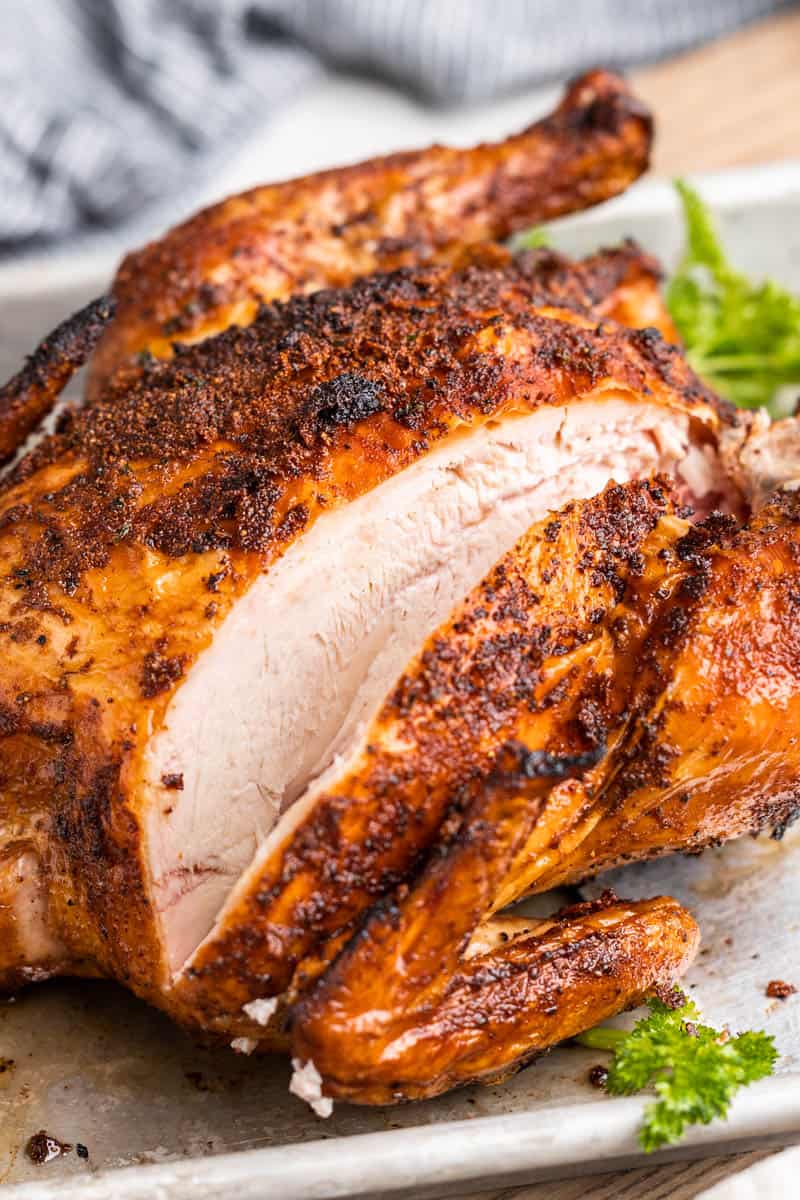
Why Salt?
In this recipe, salt is more than just a seasoning; it’s an essential part of the cooking process. By incorporating salt in the rub, it helps to draw out the chicken’s own juices, allowing the meat to reabsorb them, resulting in a moister, more flavorful bird. This technique, known as dry brining, ensures the chicken retains moisture during the smoking process while intensifying its natural flavors without diluting them with water, unlike traditional wet brining. The salt in the rub also ensures that the skin becomes crispy and flavorful.
Quick Guide to Smokers
A smoker is a specialized outdoor cooking device designed to cook meats at low temperatures for extended periods while infusing them with smoky flavors. There are several types of smokers available:
- Charcoal and wood-fired smokers are favored by traditionalists for their authentic smoky taste. This category includes the Big Green Egg and other commercial brands as well as many homemade custom builds.
- Electric and gas smokers use electricity or gas to maintain temperature control. These devices use wood chips that need to be replenished throughout the cook. Many vertical smokers fall into this category and have a little tray inside to place your wood chips.
- Pellet smokers are the most popular option right now. They combine the benefits of both, using wood pellets to generate smoke. They have a hopper that automatically feeds pellets into the device as needed during the cook and keep everything at a precise temperature. Popular brands include Traeger, Camp Chef, and Recteq.
No matter which type of smoker you are using, the key to success is maintaining a consistent temperature and selecting the right type of wood to flavor whatever you are smoking. Our recipe is designed for pellet grills since that is the most widely used and available for our audience.
Our recipes are tested on Camp Chef, Traeger, Yoder, and Recteq pellet grills by our resident Pitmaster.
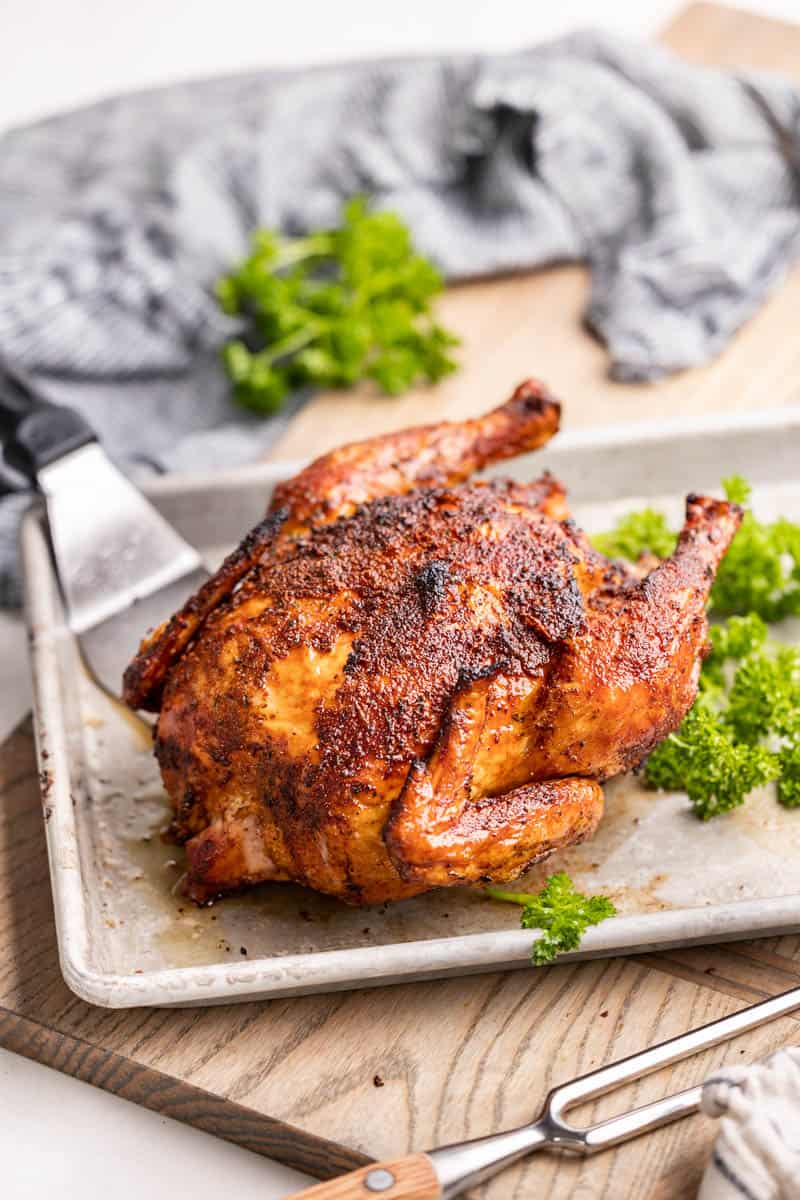
Chef Cayt’s Pellet Recommendations
When it comes to chicken, my professional Pitmaster recommendations for pellets are:
- Apple Pellets: offers a slightly sweet, fruity smoke that doesn’t overpower the chicken. It is known for being a mild smoke, making it a perfect choice for those who prefer a subtle sweet smoky taste.
- Pecan Pellets: provides a richer, nuttier smoke. Its medium intensity bridges the gap between subtle fruit woods like apple and the robust flavors of stronger hardwoods, like hickory.
- Hickory Pellets: has a strong, savory smoke. For those who love a classic barbecue flavor, hickory is the way to go.
Storage and Reheating Instructions
Refrigerate leftovers in an airtight container for up to 4 days.
Freeze leftovers in an airtight container or resealable plastic bag for up to 6 months. Thaw in the refrigerator overnight.
To reheat, place the chicken in a small baking dish and cover tightly with foil. Warm in a preheated oven at 325 degrees Fahrenheit for about 20 minutes or until heated through.
More smoked chicken options by part…
Simple Smoked Chicken Thighs
1 hr 55 mins
Smoked Chicken Wings
2 hrs 10 mins
Smoked Chicken Breast
1 hr 55 mins

